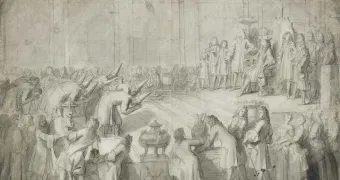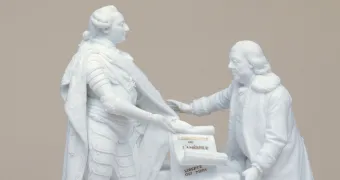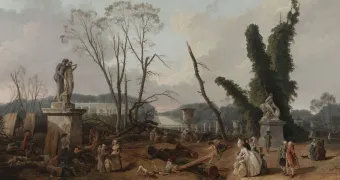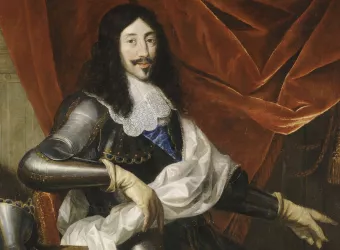The lavish reception for the Doge of Genoa, held by Louis XIV in the Hall of Mirrors, was the first of its kind at Versailles. It demonstrated the political dimension the Palace had taken on under the king at the height of his power and glory.

Reception of the Doge of Genoa, 1685 15 May 1685
By the 17th century the Republic of Genoa was no longer the trade and maritime power it once had been. To preserve its independence against Savoy and especially against France, it had to remain allies with Spain. So bound, the Republic agreed to build four galleys for the Spaniards. Angered by this provocation and the humiliating treatment suffered by his envoy, Pidou de Saint-Olon, and by the Republic of Genoa’s refusal to allow French troops to cross its territory, Louis XIV dispatched an ultimatum. In May 1684 a squadron commanded by the Marquis de Seignelay and Duquesne was sent to Genoa to demand submission of the four galleys and that ambassadors be sent to Versailles to present the Republic’s apologies. The city refused, and a bombardment began. In ten days the city was struck by 14,000 bombs and cannonballs, which flattened half of it. The Genoese were forced to surrender.
Despite the laws of the Republic of Genoa which prohibited the Doge from leaving the city on penalty of forfeiture, Louis XIV demanded that the Doge come in person to apologise. After long negotiations and multiple proposals which were rejected by the French king, the Republic decided to make an exception and send the Doge, accompanied by a lavish entourage. On 15 May 1685, Francesco Mario Lercaro thus made his solemn entry into the Hall of Mirrors, still incomplete but thronged with courtiers. To impress his guest Louis XIV had placed his magnificent solid silver furnishings throughout the series of State Apartments, right up to the Hall of Mirrors. Dressed in red velvet and flanked by four Senators wearing black, Lercaro bowed before the king, who stood on a platform at the end of the Gallery near the Peace Room, which was still being finished.
Anecdote
After making his apologies, the Doge spent ten days touring Versailles. He was shown the apartments, the gardens, the animals in the Menagerie, the Grand Canal, Trianon, and the other sights. Faced with such splendour he declared, ironically, “A year ago we were in hell, and now we are about to leave paradise!”
He attended the King’s getting-up ceremony on 23 May and took his leave on the 26th. On his departure Louis XIV presented him with a box covered with magnificent portraits, along with Gobelins tapestries. The four Senators also received Gobelins tapestries, although much less beautiful ones than the ones for the Doge, accompanied by a portrait of the king adorned with diamonds. Ostentation had become a political and diplomatic tool.
The reception sent major waves rippling across Europe: France was the rising power to beat. But a new war was brewing, the War of the League of Augsburg, which would lead to the melting down of those solid silver furnishings.
Discover

Visitors' tales
The audience of the siamese embassy
Imagined from fragments and historical testimonies, this tale recounts the siamese embassy's journey to meet Louis XIV in 1686.

Visitors' tales
Benjamin Franklin's visit to Versailles
Imagined from fragments and historcal testimonies, this tale recounts the visit of Benjamin Franklin to Versailles in 1778.

Visitors' tales
Mrs Thrale's visit to Versailles
Imagined from fragments and historical testimomies, discover the brillant Hester Thrale visiting teh court of Marie-Antoinette.










